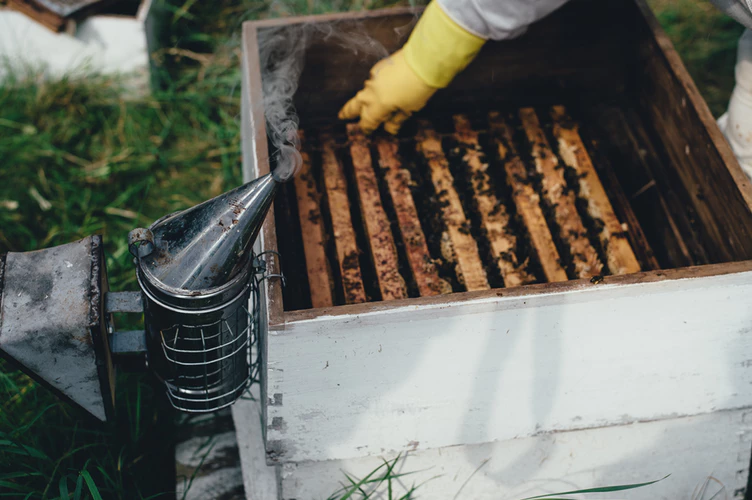The rich, sweet and syrupy flavor of honey is famous across the world and has been known for the past 8,000 years, tracing back to cave paintings in Spain. It has a distinct flavor and gets its sweetness from the presence of fructose and glucose. Honey is produced by bees which collect nectar from flowers and plants and convert it to honey in honeycombs by means of regurgitation and enzymatic activity. While the popularity of honey faced a setback with the production of granulated sugar, the demand for honey is witnessing a rapid rise, due to the health benefits that honey provides.
According to current honey market trends, the largest market in the Asia Pacific which is also the fastest growing market, increasing at a CAGR of 5.2 percent until 2020. More than 60 percent of the total global production of honey is accounted for by China, India, the U.S., Turkey, and Europe. The popularity of honey along with an imbalanced production base has resulted in large-scale trade dynamics. The major countries that export honey are China, India, and Argentina, while the main importers of honey are Germany, Japan, and the U.S.
Honey Market Upcoming Trends
There are several upcoming trends in the global honey market that are expected to have a significant impact.
Sugar Replacement: Sugar is by far the most commonly used sweetener, and while the original sources of sugar, namely sugar cane plants, and sugar beet are relatively healthy, the multistep processing that takes place to produce table sugar makes it harmful. Excessive sugar consumption causes weight gain and increases the risk of certain diseases, such as heart disease and type 2 diabetes. Popular artificial sweeteners such as saccharin and aspartame may be FDA approved, but they are also immensely harmful. In comparison, honey is a more natural sweetener that undergoes little processing and contains traces of vitamins and minerals, making it a healthy replacement for sugar.
Health Benefits: Not only is honey healthier than sugar and an ideal sugar replacement, but it also carries a host of health benefits on its own. Honey, especially high-quality honey is known to contain important antioxidants, including organic acids and flavonoids. Studies have shown that antioxidants reduce the risk of heart attacks, strokes and some forms of cancer, while also promoting eye health. In addition, honey improves cholesterol by reducing ‘bad’ LDL cholesterol levels and increasing ‘good’ HDL cholesterol.
Topical Application: Honey offers immense benefits even without ingesting it, by topical application. Honey has moisturizing and nourishing properties that make it a great natural moisturizer, especially for dry and parched skin. It can also be used to treat skin conditions such as eczema which cause itchy and flaky skin. Honey is also a great remedy for dandruff, which revitalizes dry hair, making it soft and smooth. As a natural antiseptic, honey can be applied on wounds, cuts, burns, and other infections. The healing properties of honey are expected to be a major market driving factor.
Due to ongoing research, more applications of honey, in food and non-food industries are being developed, increasing the demand for honey further.
Honey Market Opportunities
There are plenty of opportunities in the honey market, driven by the varied applications, grades of honey and regional opportunities. Major market opportunities are:
Organic Honey: The sudden boom in the demand for honey over the past few years has resulted in a supply struggling to keep pace. As a result, there has been a marked increase in the supply of low quality honey and honey adulterated with other sugar syrups. The presence of sub-standard honey in the global market has increased the demand for good quality honey, especially organic honey which is produced in a healthier fashion with experienced owners, a proper extraction process and regulated temperatures. In addition, organic honey is devoid of traces of pesticides or toxins that may be found in a factory that is bottling honey.
Emerging Economies: The production of honey is a time-consuming albeit simple process, with a hive producing around 65 pounds of honey every year. As there are no viable means to artificially produce honey, the supply of honey is dependent on the bees themselves. Emerging economies are scaling up bee production on a massive scale, with small farms in Africa being equipped with beekeeping equipment and training. Beekeeping is a reliable form of income since the production is not dependent on the weather like other crops. In addition, beekeeping is easy to learn and not labor intensive, making it a great investment and venture in developing countries, keeping up with local and international demands for honey.
Honey is flavourful and healthy, making it a popular choice for people around the world as health awareness levels increase along with disposable incomes. The applications of honey in medicine and home remedies are increasing as well, further increasing the demand. The rapid increase in demand for honey has led to the presence of adulterations in the market, posing a threat to the honey market. The quality of honey is an important factor, which has led to the popularity of organic honey, touted to be the best quality of honey. The massive demand for honey ensures plentiful opportunities in the market, especially for organic honey.











Comments are closed.